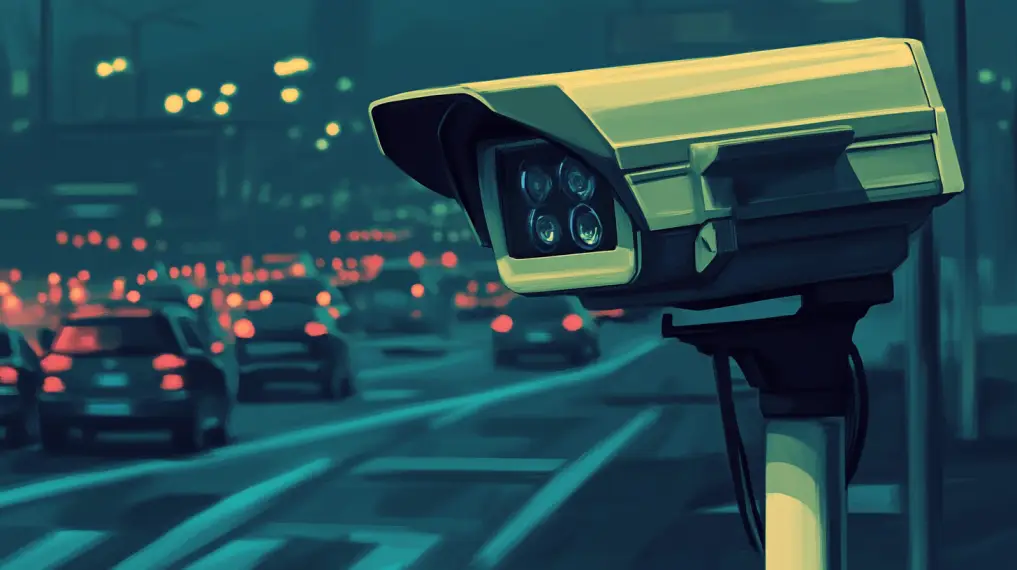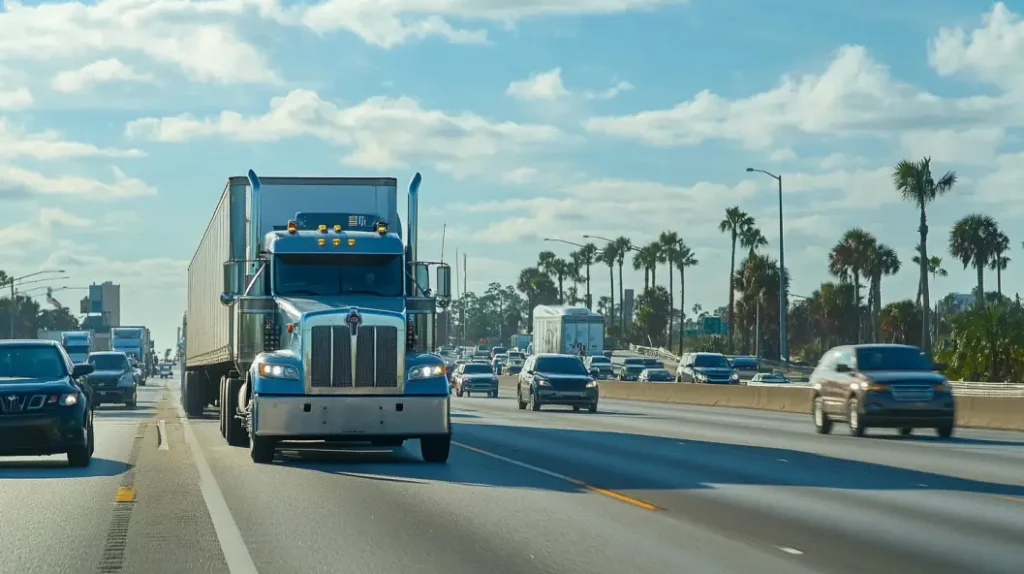Whether your crash happened here in Manatee County, or anywhere else in Southwest Florida, in today’s digital age, the landscape of auto accident claims has dramatically shifted. As you deal with the aftermath of a collision, you may find yourself relying on more than just eyewitness accounts and police reports. Digital evidence has become a crucial component in building a strong case. From dashcam footage capturing the moment of impact to smartphone videos documenting the scene, and even social media posts inadvertently revealing key details, technology now plays a pivotal role in substantiating your claim. Understanding how to leverage these digital tools can significantly strengthen your position and potentially lead to a more favorable outcome in your auto accident case.
Traditionally, evidence in these auto accident cases relied heavily on eyewitness testimonies, physical damage assessments, and police reports. However, the digital age has brought a profound shift in how evidence is collected, presented, and utilized in legal proceedings. This shift not only enhances the accuracy and reliability of evidence but also speeds up the claims process, ensuring that justice is served more effectively.
At the law firm of Goldman, Babboni, Fernandez, Murphy & Walsh we will explore the significance of digital evidence in contemporary auto accident claims, examining its various forms, advantages, and the legal considerations that come with it. By understanding the crucial role of digital evidence, claimants and legal practitioners alike can better handle the details of auto accident cases and leverage technology to support their claims.
The Power of Digital Documentation
Digital evidence offers an unprecedented level of detail and accuracy in reconstructing accident scenarios. Dashcam footage, smartphone videos, and even social media posts can provide crucial insights into the circumstances surrounding an incident. These digital breadcrumbs often capture moments that human memory might miss or distort, offering car accident lawyers a more comprehensive picture of events.
The ubiquity of smartphones and other digital devices has democratized evidence collection. Witnesses and involved parties can now easily document accident scenes, injuries, and property damage in real-time. This immediate documentation can be invaluable in preserving critical details that might otherwise be lost or altered over time.
Smartphone Data
In today’s digital age, smartphones have become integral to documenting and managing auto accident claims. These devices, which are constantly with us, offer a wealth of information that can be crucial in legal proceedings. The role of smartphones in documenting accidents extends beyond simply capturing photographs or videos; they also provide valuable data through GPS, timestamps, and other metadata.

Role of Smartphones in Documenting Accidents
Smartphones are versatile tools that can play a significant role in documenting auto accidents. In the immediate aftermath of a collision, drivers and witnesses can use their phones to take photos and videos of the accident scene. This visual evidence can capture critical details such as vehicle damage, road conditions, traffic signs, and the positions of vehicles involved. Additionally, smartphones often have built-in features that enable users to record audio, which can be used to document conversations or statements made at the scene. This real-time documentation can be instrumental in providing a clear and comprehensive account of the incident.
GPS, Timestamps, and Other Metadata
Beyond visual and audio recordings, smartphones provide a range of metadata that can enhance the value of the evidence collected. GPS data, for instance, can pinpoint the exact location of the accident. This geographical information can be crucial in determining the precise location of the collision, validating the claims of the parties involved, and corroborating the testimony with the physical evidence at the scene. For example, GPS coordinates can help establish the trajectory of vehicles leading up to the accident and confirm the positions of vehicles relative to road features.
Timestamps embedded in smartphone photos and videos offer another layer of valuable information. These timestamps can establish the timing of the evidence captured, which helps to create a chronological sequence of events. This is particularly useful in verifying the timing of the accident, understanding the sequence of actions taken by the drivers, and assessing the conditions at the time of the collision. By correlating timestamps with other evidence, such as police reports and witness statements, the accuracy and credibility of the claim can be significantly strengthened.
In addition to GPS and timestamps, smartphones can also provide other forms of metadata that might be relevant in an accident claim. For instance, some smartphones include accelerometer data that records sudden movements or impacts, which can provide additional context about the severity of the accident. This data can complement visual and audio evidence, offering a more comprehensive understanding of the accident.
Overall, smartphone data has become an essential component in the investigation and resolution of auto accident claims. By leveraging the capabilities of smartphones, individuals involved in accidents can gather and preserve valuable evidence that supports their claims and helps clarify the circumstances surrounding the collision. However, it is important to ensure that the data collected is handled properly and in accordance with legal standards to maintain its integrity and admissibility in court.
Social Media Posts Offer Insight Into What Happened
In today’s digital age, social media has become an unexpected ally for car accident lawyers seeking to unravel the truth behind collisions. These online platforms can provide a wealth of information that may prove crucial in supporting your case.
Social media posts, check-ins, and timestamps can help reconstruct the events leading up to an accident. By carefully examining these digital breadcrumbs, investigators can piece together a more accurate timeline of what transpired before, during, and after the accident.
Images and videos shared on social platforms can offer valuable visual evidence. A seemingly innocent selfie taken moments before a crash might reveal distracted driving, while a post-accident photo could document road conditions or vehicle damage that supports your claim.
Social media profiles can provide insights into a person’s character, habits, and lifestyle. This information may be relevant in assessing liability or determining the extent of injuries. For instance, if an at-fault driver claims they never drink, but their social media shows a pattern of partying, it could significantly impact the case.
Remember, while social media evidence can be powerful, it’s essential to work with experienced car accident lawyers who understand how to properly collect, preserve, and present this digital information in court. Your social media activity can also affect your own case, so always consult with your attorney before posting about an accident online.
Dashcams Provide Crucial Video Footage
In addition to phones, dashcams have emerged as a game-changing tool for automobile accident attorneys and car accident lawyers alike. These unassuming devices mounted on vehicle dashboards offer an unbiased, real-time account of road accidents, providing invaluable evidence in legal proceedings.
Indisputable Evidence for Claims
Dashcam footage serves as a silent witness, capturing every detail of an accident as it unfolds. This visual record can substantiate your version of events, offering clear and indisputable evidence that can significantly strengthen your case. For car accident lawyers, such footage can be the linchpin in proving fault and securing fair compensation for their clients.
One of the most compelling benefits of dashcams is their ability to safeguard against fraudulent claims. In an era where insurance scams are increasingly sophisticated, having video evidence can exonerate innocent drivers from false accusations. Automobile accident attorneys can leverage this footage to quickly dismiss baseless claims, saving their clients from unnecessary legal battles and potential financial losses.
Dashcam recordings can dramatically streamline the claims process. By providing a clear, objective account of the incident, these devices help insurance adjusters and legal professionals quickly assess liability. This efficiency not only saves time but can also lead to faster settlements, allowing victims to receive the compensation they deserve without prolonged legal proceedings.
These compact devices are mounted on a vehicle’s windshield and continuously record the view of the road ahead, providing a real-time video log that can be crucial in the aftermath of an auto accident. Dashcams capture a wealth of information, including interactions with other drivers, road conditions, and traffic signals. This continuous recording allows for a detailed and unfiltered view of the accident, offering insights that may not be apparent from eyewitness accounts alone.
Many dashcams are equipped with loop recording, a feature that overwrites old footage unless an event is detected. This ensures that the moments immediately before and after an accident are preserved, providing a comprehensive perspective on the circumstances leading up to and following the collision. Additionally, advanced dashcams often include accelerometers and G-sensors that can detect sudden changes in speed or direction. This data can corroborate the timing and intensity of the accident, adding another layer of evidence to support a claim.
However, the use of dashcam footage as evidence in legal proceedings involves several considerations. For the footage to be admissible in court, it must meet specific legal standards, including authenticity, relevance, and lawful acquisition. Courts require that the evidence accurately represents the events recorded, so the party presenting the footage must demonstrate the integrity of the recording process. This may involve proving that the dashcam was functioning properly and that the footage has not been altered.
Maintaining the chain of custody is crucial to preserving the integrity of dashcam evidence. This involves ensuring that the footage is collected, stored, and transferred in a manner that prevents tampering or loss. Proper documentation of the evidence-handling process is essential to establish its credibility and reliability in legal proceedings. Additionally, while dashcams provide valuable evidence, they can face technical challenges such as poor video quality, limited field of view, or data corruption, which can impact the reliability of the footage. Legal professionals must carefully assess the quality and completeness of the dashcam evidence and address any technical issues.
Lastly, privacy concerns also come into play with the use of dashcam footage. In some jurisdictions, there are legal restrictions on recording audio or video in certain settings. Ensuring compliance with local privacy laws is essential to avoid potential legal complications.
Smartphone Videos Can Capture Accidents As They Happen
In today’s digital age, smartphones have become powerful tools for documenting auto accidents. These devices can provide crucial evidence that automobile accident attorneys and car accident lawyers can leverage to build a strong case for their clients.
Smartphone videos offer an unparalleled opportunity to capture accidents as they unfold. This real-time documentation can provide invaluable insights into the sequence of events, road conditions, and driver behaviors leading up to and during a collision. Such footage can be instrumental in establishing fault and liability, making it a vital asset for both car accident lawyers and their clients.
While smartphone videos can be incredibly useful, it’s important to note that live streaming while driving is illegal and dangerous in most states. Passengers, however, can safely record accidents without compromising road safety. Always prioritize safe driving practices over capturing footage.
Smartphone footage has even captured extraordinary events beyond typical road accidents. For instance, a passenger’s smartphone video recently documented a plane crash in Nepal, highlighting the potential of these devices to record unexpected accidents that may have legal implications.
By harnessing the power of smartphone videos, automobile accident attorneys can build stronger cases and provide more comprehensive representation for their clients in the digital age.
Surveillance Cameras CCTV Capture Crash Footage

Surveillance cameras have also become another highly effective asset in the investigation of auto accidents, offering a detailed view of the events leading up to and following a collision. The utilization of CCTV (Closed-Circuit Television) footage can provide an objective, third-party perspective that enhances the accuracy of accident investigations and supports the claims process.
Utilization of CCTV Footage in Accident Investigations
CCTV footage can play a vital role in reconstructing the sequence of events during an auto accident. These cameras, often installed in strategic locations such as traffic intersections, commercial properties, and public spaces, continuously record video that can capture pivotal moments of a collision. When available, CCTV footage can offer a clear and unbiased account of the accident, which is invaluable in verifying the circumstances and determining liability.
For instance, footage from a traffic camera positioned at an intersection can reveal how the vehicles involved in the accident were moving before the collision, including their speeds and trajectories. This information can help clarify disputed points, such as whether a driver ran a red light or was following too closely. Additionally, CCTV footage can document other important details such as road conditions, weather, and the behavior of drivers leading up to the accident, all of which can be crucial in building a comprehensive case.
Obtaining Footage from Public and Private Sources
Acquiring CCTV footage involves navigating both public and private sources, each with its own set of procedures and considerations. Public surveillance cameras, such as those operated by municipal traffic management systems, can often be accessed through requests made to local government agencies or law enforcement departments. In many cases, these agencies have protocols for releasing footage related to traffic accidents, and formal requests may be required to obtain the relevant video.
Private surveillance footage, on the other hand, comes from cameras installed on private property such as businesses, residences, or parking lots. To obtain this footage, individuals typically need to reach out directly to the property owners or managers. This process can sometimes be more complex, as private entities are not obligated to release footage unless required by a legal order. In such cases, a subpoena or court order may be necessary to compel the release of the video evidence.
It is important to act quickly when seeking CCTV footage, as many systems have limited storage capacity and overwrite older footage regularly. Promptly contacting the relevant parties and requesting the footage as soon as possible can help ensure that the evidence is preserved and available for review.
Obtaining CCTV footage From Surveillance Cameras
The process of obtaining CCTV footage involves navigating both public and private sources. Public surveillance cameras, such as those managed by municipal traffic control systems, can be accessed through requests to local government agencies or law enforcement departments. These agencies typically have established procedures for releasing footage related to traffic incidents, though formal requests and sometimes legal documentation may be required to obtain the relevant video.
On the other hand, private surveillance footage, which comes from cameras installed on private properties like businesses or homes, requires direct engagement with property owners or managers. Obtaining this footage can be more complex, as private entities are not obligated to release footage unless compelled by legal orders. In such cases, securing a subpoena or court order may be necessary to access the video evidence.
It is essential to act swiftly when seeking CCTV footage, as many systems have limited storage and may overwrite old footage regularly. Promptly contacting the appropriate parties and requesting the footage as soon as possible is essential to preserving the evidence and ensuring its availability for investigation. Overall, surveillance cameras provide invaluable evidence that can enhance the investigation and resolution of auto accident claims, offering a clear, third-party view that can support or refute the claims made by the involved parties.
Vehicle Data Recorders (Black Boxes)
Event data recorders (EDRs) or Vehicle data recorders, often referred to as black boxes, are sophisticated devices embedded in modern vehicles that capture critical data about a vehicle’s performance and operation. These devices, which are similar in function to the black boxes used in aircraft, record a range of information that can be invaluable in the aftermath of an auto accident. The data collected typically includes details such as speed, braking patterns, acceleration, and engine performance. By analyzing this data, investigators can gain a clearer understanding of the vehicle’s behavior leading up to the collision, providing insights into factors like driver reaction times and vehicle dynamics.

One of the primary types of data recorded by black boxes is the vehicle’s speed at various points leading up to the accident. This information can help determine if the vehicle was traveling above the speed limit or if there were sudden changes in speed that could have contributed to the collision. Additionally, black boxes track braking events, providing data on when and how forcefully the brakes were applied. This can be crucial in understanding whether the driver attempted to avoid the accident and how effectively the braking system was utilized. Other data such as engine performance and throttle usage can also shed light on the operational status of the vehicle at the time of the accident.
Retrieving data from a vehicle’s black box involves a specific process that must be carried out with care to ensure the accuracy and integrity of the information. Typically, the data is accessed using specialized tools and software by trained professionals. The retrieval process often requires connecting to the vehicle’s onboard diagnostics port, which allows for the extraction of recorded data. It is essential that this process is performed correctly to avoid data corruption or loss, and to maintain the chain of custody for the evidence.
The legal implications of using black box data in accident investigations are significant. For the data to be admissible in court, it must meet certain legal standards, including authenticity and relevance. Courts generally require that the data be a true and accurate representation of the vehicle’s performance, which means that the extraction and handling of the data must be documented and conducted in accordance with legal procedures. Additionally, privacy concerns may arise, as the data recorded by black boxes can include sensitive information about the vehicle’s operation and the driver’s behavior. Ensuring that the data is obtained and used in compliance with privacy laws is crucial to avoid legal complications.
Accuracy and Objectivity
One of the most compelling advantages of digital evidence in auto accident claims is its ability to provide accuracy and objectivity. Unlike traditional forms of evidence, which can be subject to personal bias or interpretation, digital evidence offers a precise and factual account of events. This accuracy is particularly valuable in legal contexts where the details of an accident can be complex and contested.
Digital evidence, such as footage from dashboard cameras, surveillance cameras, or data from vehicle recorders, minimizes the risk of subjective interpretations. For example, a dashcam video captures a clear, unaltered view of the accident scene, including the movements of all involved vehicles, road conditions, and traffic signals. This visual documentation reduces the reliance on potentially unreliable eyewitness testimonies and helps to establish a more objective narrative of the incident. By providing a direct record of the events, digital evidence helps to clarify the circumstances surrounding the collision and supports a fair assessment of liability.
Additionally, digital evidence offers detailed and factual documentation that can enhance the credibility of a claim. For instance, GPS data from a smartphone or vehicle data recorder can provide precise information about the location and speed of a vehicle at the time of the accident. This level of detail is crucial in reconstructing the sequence of events and understanding how the accident occurred. By relying on objective data rather than subjective accounts, digital evidence helps to create a comprehensive and accurate depiction of the accident, which can be instrumental in resolving disputes and ensuring that justice is served.
Enhancing Claim Validity
Digital evidence significantly enhances the validity of auto accident claims by strengthening the credibility of the claims and supporting narratives with concrete proof. In the realm of legal disputes, where the details of an accident can often be contested, having objective evidence can make a crucial difference in the outcome of a case.
The inclusion of digital evidence, such as video footage from dashboard cameras or data from vehicle recorders, adds a layer of authenticity and reliability to a claim. This evidence provides an unaltered record of the events leading up to, during, and following an accident. For instance, a dashcam video can capture the precise moment of impact, the behavior of the drivers involved, and the conditions of the road. This direct visual evidence can help substantiate claims by presenting a clear, factual account of the incident, reducing the likelihood of disputes over the details.
Moreover, digital evidence supports narratives with concrete proof, reinforcing the arguments presented by claimants. When a claimant’s account of the accident aligns with the data recorded by a vehicle’s black box or the footage from a surveillance camera, it strengthens the overall case by providing corroborative evidence. This alignment between personal testimony and objective data can be pivotal in persuading insurance companies, judges, or juries of the validity of the claim. By providing undeniable proof of key details, such as the speed of the vehicles involved or the timing of the accident, digital evidence helps to create a more compelling and credible narrative.
Timeliness and Accessibility
Digital evidence offers significant advantages in terms of timeliness and accessibility, which can greatly impact the efficiency of auto accident claims processing. One of the key benefits of digital evidence is its instant availability. Unlike traditional forms of evidence, such as physical documents or eyewitness testimonies, digital data can often be accessed and reviewed immediately. For example, video footage from dashboard cameras or surveillance systems can be retrieved and examined shortly after an incident, providing a rapid and accurate depiction of the events. This immediacy allows for a swift assessment of the situation, which is crucial in the fast-paced environment of legal and insurance claims.
The instant availability of digital evidence facilitates quicker claims processing by streamlining the investigation and decision-making process. When evidence such as GPS data from smartphones or black box data from vehicles can be quickly accessed, it enables claimants, insurance adjusters, and legal professionals to promptly evaluate the details of the accident. This can lead to faster resolutions, as the evidence helps to clarify key aspects of the claim and supports informed decisions. The ability to quickly review and analyze digital evidence can also reduce the time required for negotiations and litigation, ultimately speeding up the overall claims process.
Furthermore, the accessibility of digital evidence extends beyond the initial retrieval. Once collected, digital data can be easily shared among various parties involved in the claim, including insurance companies, legal teams, and experts. This ease of distribution ensures that all relevant parties have timely access to the same information, promoting transparency and collaboration. Digital evidence can also be stored and archived electronically, making it readily accessible for future reference or additional legal proceedings if needed.
Admissibility in Court
The admissibility of digital evidence in court is a critical aspect of its effectiveness in supporting auto accident claims. For digital evidence to be accepted in legal proceedings, it must meet specific legal standards designed to ensure its authenticity, relevance, and reliability. These standards are in place to safeguard the integrity of the evidence and to prevent the inclusion of any data that could be misleading or incorrect.
Ensuring that digital evidence meets legal standards involves several key steps. First, the evidence must be authenticated, meaning that its origin and integrity must be verifiable. This involves demonstrating that the data has not been tampered with or altered since its collection. For example, when presenting video footage from a dashboard camera, it is essential to prove that the footage is an accurate and unmodified recording of the incident. This often requires providing documentation of the evidence collection process and any subsequent handling to establish a clear chain of custody.
Second, the evidence must be relevant to the case at hand. This means that the digital data must directly pertain to the facts of the accident and contribute meaningful information to the resolution of the claim. Relevant data might include video footage that captures the moment of impact or GPS data that provides insight into the vehicle’s speed and location. The relevance of the evidence helps to ensure that it will be useful in establishing the facts and supporting the arguments presented in court.
However, the admissibility of digital evidence can face challenges and rebuttals from opposing parties. One common challenge is questioning the reliability of the evidence. Opposing parties may argue that the data is not accurate or that it has been improperly handled. For instance, they may challenge the authenticity of video footage by suggesting that it could have been edited or manipulated. To counter such challenges, it is important to provide detailed documentation and expert testimony that verifies the accuracy and integrity of the evidence.
Another challenge might involve disputing the chain of custody. If there are any gaps or inconsistencies in how the evidence was collected, stored, or transferred, it could lead to arguments that the evidence is inadmissible. Ensuring meticulous record-keeping and following established protocols for handling digital evidence are crucial in addressing these concerns.
Privacy Concerns And Digital Evidence Civil Cases

Privacy concerns are a significant consideration when using digital evidence in auto accident claims, as they involve balancing the need for evidentiary information with respect for individual privacy rights. As technology becomes more integrated into daily life, the collection and use of digital data, such as video footage from dashboard cameras or GPS information from smartphones, raise important questions about privacy and data protection.
Balancing privacy rights with evidentiary needs requires careful consideration of the scope and extent of data collection. While digital evidence can provide valuable insights into the circumstances of an accident, it is crucial to ensure that the data collected does not infringe on individuals’ reasonable expectations of privacy. For instance, while a dashcam recording might capture the moment of an accident, it may also inadvertently record private conversations or activities unrelated to the accident. To address these concerns, it is important to limit the use of digital evidence to information directly relevant to the case and to avoid unnecessary intrusion into personal privacy.
Ensuring lawful acquisition and usage of digital evidence is essential to comply with privacy laws and regulations. The process of obtaining digital evidence must adhere to legal standards to protect individuals’ rights and avoid potential legal challenges. For example, in many jurisdictions, recording audio or video in public spaces is subject to specific regulations, and consent may be required from all parties involved. Similarly, accessing data from private devices or surveillance systems often requires proper authorization, such as consent from the device owner or a court order. Ensuring that evidence is collected and used in accordance with these legal requirements helps to maintain the legitimacy of the evidence and prevents potential privacy violations.
Furthermore, once digital evidence is acquired, it must be handled and stored in a manner that respects privacy and data protection principles. This involves implementing secure storage practices to prevent unauthorized access and ensuring that any data sharing is done in compliance with legal standards. Proper documentation of the evidence-handling process and adherence to data protection protocols are essential in safeguarding privacy and maintaining the integrity of the evidence.
Case Studies and Examples
Real-life examples illustrate the powerful impact that digital evidence can have on auto accident cases. One notable case involved a collision at a busy intersection where a vehicle ran a red light and caused a multi-car accident. The primary evidence presented was video footage from a traffic camera mounted at the intersection. The footage clearly showed the traffic signal turning red before the vehicle entered the intersection, corroborating the claim of the injured parties. This video evidence was crucial in establishing fault and securing a favorable settlement for the plaintiffs.
In another case, a driver claimed that they had braked in time to avoid an accident, but the opposing party disputed this assertion. The defense presented data from the vehicle’s black box, which recorded the exact speed and braking patterns leading up to the collision. The data revealed that the driver had not applied the brakes until moments before impact, directly countering their claim. The black box evidence was instrumental in proving the true nature of the driver’s actions and led to a successful outcome in favor of the plaintiffs.
These examples highlight how digital evidence, such as video footage and vehicle data recordings, can provide clear and objective insights into the circumstances of an accident. By offering detailed, factual documentation, digital evidence can play a decisive role in resolving disputes and ensuring that justice is served.
Why Automobile Accident Attorneys Should Act Quickly to Gather Digital Evidence
In today’s digital age, the swift collection of electronic data has become crucial for automobile accident attorneys seeking to build strong cases for their clients. Digital evidence provides an objective and detailed account of incidents, often capturing critical moments that can make or break a claim.
Time is of the essence when it comes to gathering digital evidence. Surveillance footage may be overwritten, dashcam data could be lost, and social media posts might be deleted. Car accident lawyers must act promptly to secure these valuable resources before they vanish.
Digital evidence offers unparalleled accuracy in determining fault. High-resolution videos can reveal traffic violations, smartphone data may indicate distracted driving, and GPS records can verify vehicle locations. This precision helps attorneys establish liability and negotiate fair compensation for their clients.
Quick evidence collection can effectively counter misleading accounts of an incident. By securing digital proof early, automobile accident attorneys can challenge inaccurate statements and strengthen their client’s position. This proactive approach often leads to faster resolutions and more favorable outcomes.
The rapid acquisition of digital evidence is not just beneficial—it’s essential for modern auto accident claims. As technology continues to evolve, so too must the strategies employed by legal professionals to protect their clients’ interests.
Digital evidence has become an indispensable tool in modern auto accident claims. By leveraging dashcam footage, smartphone videos, and social media posts, you can significantly strengthen your case and increase your chances of a favorable outcome. As technology continues to evolve, the importance of digital evidence in legal proceedings will only grow. To protect your interests, it is crucial that you act quickly to preserve and collect all available digital evidence following an accident. By working closely with an experienced attorney who understands the significance of digital evidence, you can ensure that your rights are protected and that you receive the compensation you deserve in the aftermath of an auto accident.
Digital evidence has become a cornerstone in modern auto accident claims, offering unparalleled accuracy, objectivity, and timeliness. Its ability to provide real-time and detailed documentation enhances the credibility of claims, supports narratives with concrete proof, and facilitates quicker claims processing. As technology continues to advance, the scope and effectiveness of digital evidence are likely to evolve, introducing new tools and methods for capturing and analyzing data.
Looking forward, the integration of emerging technologies, such as advanced sensor systems and artificial intelligence, promises to further refine the role of digital evidence in legal proceedings. As these technologies develop, they will offer even greater precision and insight into the complexities of auto accident cases, shaping the future of legal and insurance claims.
At Goldman, Babboni, Fernandez, Murphy & Walsh, we understand the critical importance of digital evidence in navigating auto accident claims. Our experienced team is dedicated to leveraging the latest technological advancements to support your case and ensure that you receive the justice you deserve. If you have been involved in an auto accident and need expert legal representation, contact us to discuss how we can assist you with your claim.
More On Digital Evidence And Injury Cases:
Leveraging Tech in Legal Cases Post-Auto Accidents – Proof
Phones Track Everything but Their Role in Car Wrecks
Social Media as Evidence in a Car Accident Claim
https://www.nist.gov/digital-evidence
The post Bradenton Attorney On Digital Evidence in Modern Auto Accident Claims appeared first on Justice Pays.




